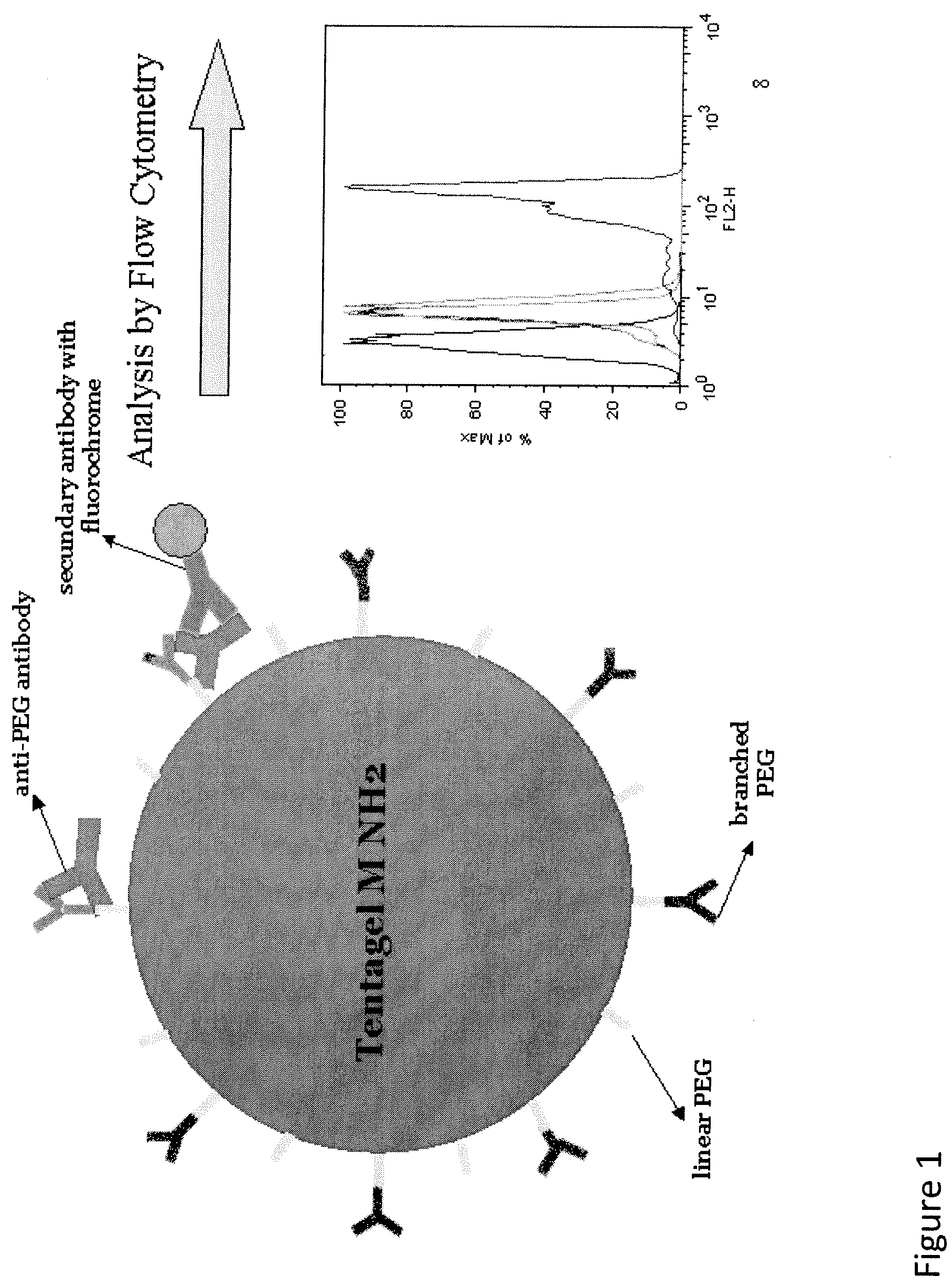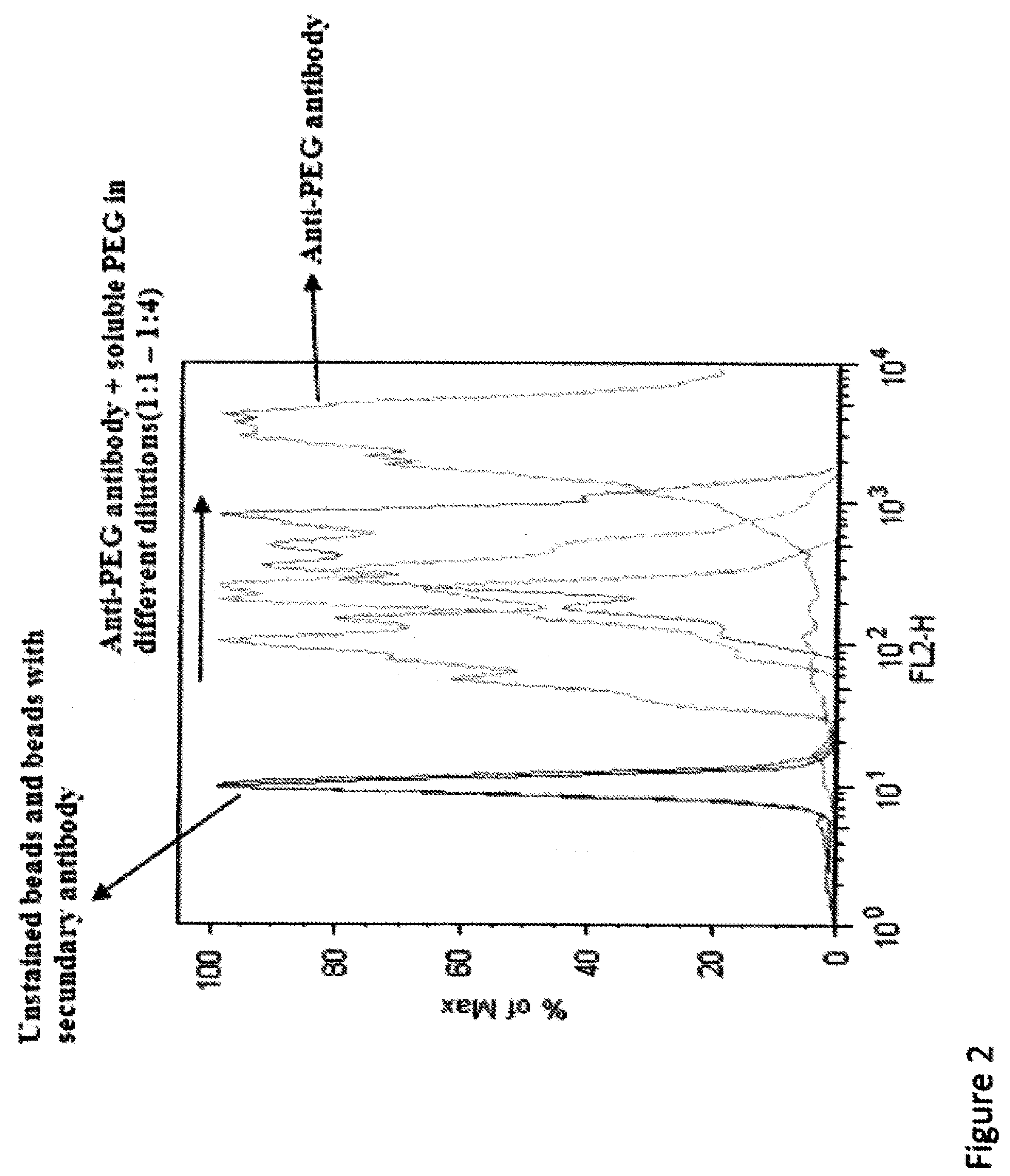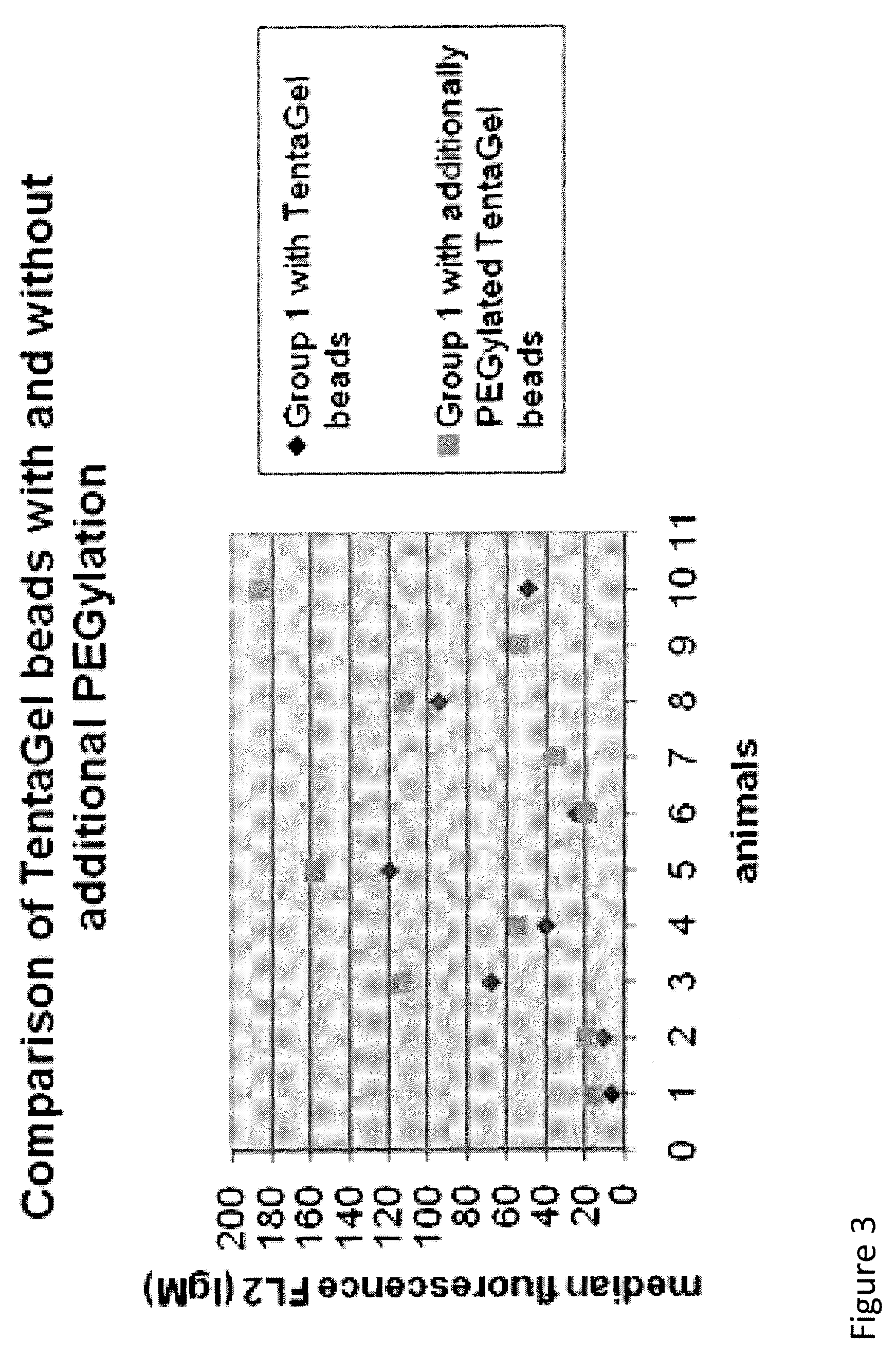Detection of antibody that binds to water soluble polymer-modified polypeptides
a technology of antipolymer antibody and water soluble polypeptide, which is applied in the field of analytical methods for detecting antipolymer antibody, can solve the problems of reducing the half-life and circulation time of drugs, limiting their therapeutic effectiveness, and rendering treatment ineffectiv
- Summary
- Abstract
- Description
- Claims
- Application Information
AI Technical Summary
Benefits of technology
Problems solved by technology
Method used
Image
Examples
example 1
Chemical Modification of TentaGel® M NH2 Beads with a Branched PEG Reagent (20 kD)
[0065]TentaGel® M NH2 Beads (capacity: 0.24 mmol / g) were provided by Rapp Polymere (Tubingen, Germany) (grafted copolymers consisting of a low cross-linked polystyrene matrix on which a linear polyethylene glycol moiety is grafted). The primary amino group of the PEG chains of the beads was chemically modified with a branched PEGylation reagent (1,3-Bis(methoxypoly(ethylene glycol)carbamoyl)-2-propanoxy-4-succinimidyl butanoate) with a MW of 20 kD containing an active N-hydroxysuccinimide (NHS) group. 450 mg TentaGel® M NH2 beads were suspended in 20 ml Buffer A (50 mM HEPES, 100 mM NaCl, pH 7.4). Then the suspension was centrifuged for 30 minutes (2800 RCF). The supernatant was discarded and the remaining beads were suspended again in 20 ml Buffer A. The suspension was gently shaken for five minutes and placed in an ultrasonic bath for 30 sec to avoid aggregates. Then the washing procedure was repeate...
example 2
Chemical Modification of TentaGel® M NH2 Beads with Branched PEG Reagents (40 kD and 60 kD)
[0067]The primary amino group of the PEG chains of TentaGel® M NH2 beads (Rapp Polymere, Tübingen, Germany) (grafted copolymers consisting of a low cross-linked polystyrene matrix on which a linear polyethylene glycol moiety is grafted) was chemically modified with 40 kD or 60 kD branched PEGylation reagents (2,3-Bis(methylpolyoxyethylene-oxy)-1-(succinimidyl carboxypentyloxy)propane) containing an active NHSgroup. The reagents were obtained from NOF Corporation (Tokyo, Japan). Seventy-five mg TentaGel® M NH2 beads were suspended in 20 ml Buffer A (50 mM HEPES, 100 mM NaCl, pH 7.4) and the suspension was gently shaken for five minutes and placed in an ultrasonic bath for 30 sec to avoid aggregates and gently shaken again for 5 minutes. Then the suspension was centrifuged for 30 minutes (2800 RCF). The supernatant was discarded and then the remaining beads were suspended again in 20 ml Buffer A...
example 3
Chemical Modification of TentaGel® M NH2 Beads with Polysialic Acid
[0068]Polysialic acid (Sigma) was purified by anion-exchange chromatography on Q-Sepharose FF (GE-Healthcare) and lyophilized. Then the PSA was oxidized with NaIO4 [Fernandes and Gregoriadis, Biochim Biophys Acta, 1341: 26-34 (1997)], and a terminal aldehyde group was formed. Subsequently the PSA was coupled to TentaGel® M NH2 beads (grafted copolymers consisting of a low cross-linked polystyrene matrix on which a linear polyethylene glycol moiety is grafted) by reductive amination with NaCNBH3 as reductive agent.
[0069]Seventy-five mg TentaGel® M NH2 beads (grafted copolymers consisting of a low cross-linked polystyrene matrix on which a linear polyethylene glycol moiety is grafted) were suspended in 10 ml Buffer A (50 mM HEPES, 350 mM NaCl, 5 mM CaCl2, 0.01% Tween 80, pH 7.4) and the washing procedure was carried out as described in Example 2. Then PSA was added to give a final concentration of 85 mg / ml and the pH w...
PUM
| Property | Measurement | Unit |
|---|---|---|
| molecular weight | aaaaa | aaaaa |
| molecular weight | aaaaa | aaaaa |
| polydispersity | aaaaa | aaaaa |
Abstract
Description
Claims
Application Information
 Login to View More
Login to View More - R&D
- Intellectual Property
- Life Sciences
- Materials
- Tech Scout
- Unparalleled Data Quality
- Higher Quality Content
- 60% Fewer Hallucinations
Browse by: Latest US Patents, China's latest patents, Technical Efficacy Thesaurus, Application Domain, Technology Topic, Popular Technical Reports.
© 2025 PatSnap. All rights reserved.Legal|Privacy policy|Modern Slavery Act Transparency Statement|Sitemap|About US| Contact US: help@patsnap.com



